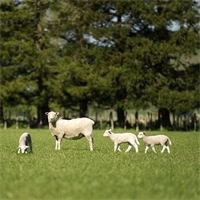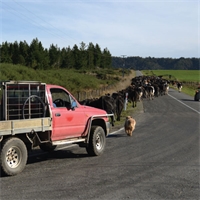30Nov
Pick the right brassica herbicide and get better crops and greater flexibility with crop rotations
THIS PROMOTIONAL FEATURE WAS PROVIDED BY CORTEVA AGRISCIENCE.
Most brassica crops will benefit from a herbicide while the crop emerges and establishes. Control of weeds during brassica establishment relies on choosing a suitable approach for your scenario (pre- or post-emergence programme) and then selecting herbicides that best fit the weed spectrum and crop rotation.
Post-emergence weed control programmes are all about spraying if and when weeds have emerged. Select a herbicide that best controls the key weeds present, with a manageable grazing withholding period and a plant-back suitable for the following crop. There are several post-emergence herbicides to choose from, each with their own weed spectrum. All of these herbicides have plant-backs that need to be considered for broadleaf pasture species like clover or other crops such as beet or lucerne.
Corteva Agriscience have developed Korvetto™, a unique post-emergence broadleaf herbicide, for scenarios where a wide weed spectrum and short plant-back are important. The plant-back for clover following application of Korvetto is just three months, while fodder beet, lucerne and many other crops is six months. An application of Korvetto to spring or early summer sown forage brassica should not pose any restrictions for typical rotations in pastoral farm systems. This is a key advantage over many existing post-emergence herbicide options which have longer plant-backs.
Korvetto controls many weeds commonly found in forage brassica. Arylex™ active and clopyralid combine to kill a broad spectrum of weeds including fathen, black nightshade, hairy nightshade, shepherd's purse, fumitory, thistles, yarrow, dandelion, narrow leaf plantain and many more.
Application timing is important as best results are achieved on weeds at the 2-4 leaf stage. Delaying application often leads to poor control of some harder-to-kill weeds, by which time they are already competing with the crop and will not be suppressed by canopy.
Poor plant populations or crop establishment e.g. due to unforeseen pest damage or adverse weather events, often leads to a poor canopy and exposes the crop to weed pressure throughout the growing season. These scenarios require careful assessment so talk to your Ruralco Representative as soon as possible for advice.
Walk brassica crops regularly and thoroughly to identify issues early for timely treatment. When assessing brassica crop for weeds, consider the opportunity to control pests which may be present or are building up in the crop. SpartaTM provides control of springtail, leaf miner, white butterfly caterpillar and diamondback moth while aphids can be controlled using TransformTM.
For more information, contact your Ruralco representative.
Related

One of the many things that New Zealand arable farmers do very, very well, is adapting to change. Ne...
Read More

What started out as a fleeting comment has grown into fledgling business for a Selwyn couple determi...
Read More

Livestock monocultures and inappropriate drenching practices are contributing to the emergence of in...
Read More

For many people around the world, farewelling 2020 came with the hope that 2021 would somehow bring ...
Read More

Ruralco’s commitment to the health and safety of its staff, members and suppliers was applauded as ...
Read More

We tend to talk a lot about eating well and exercising, these things are important, but research sug...
Read More